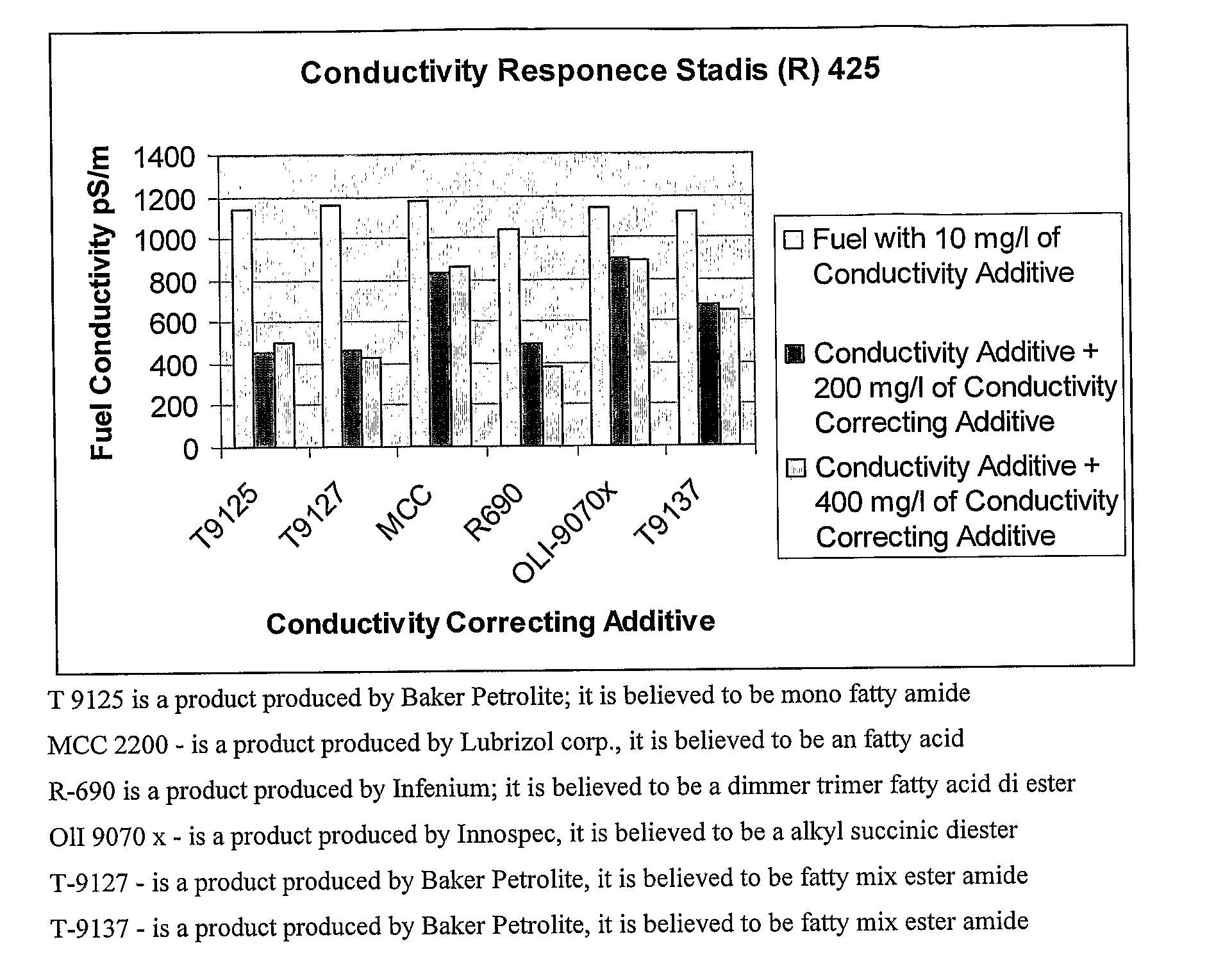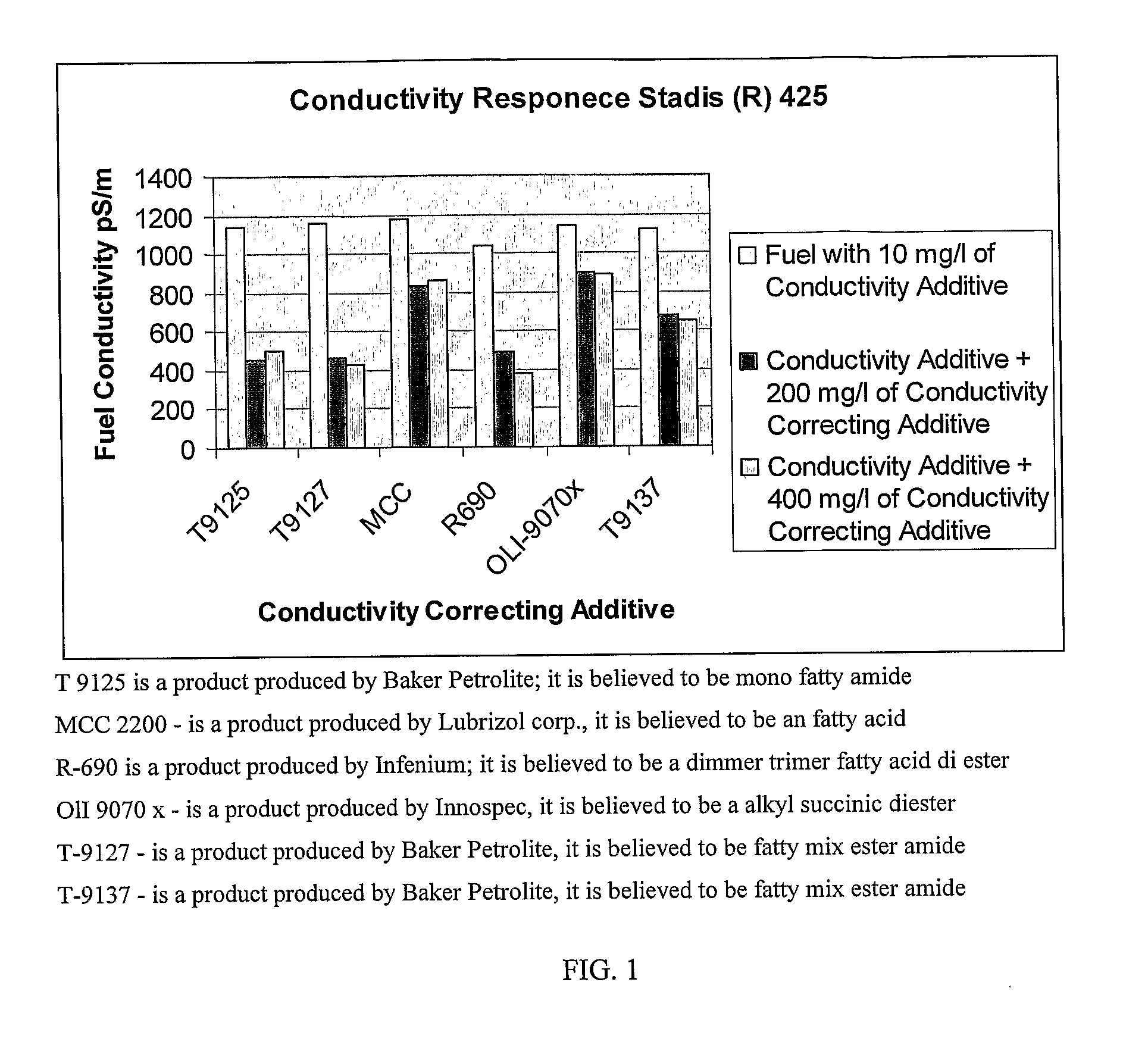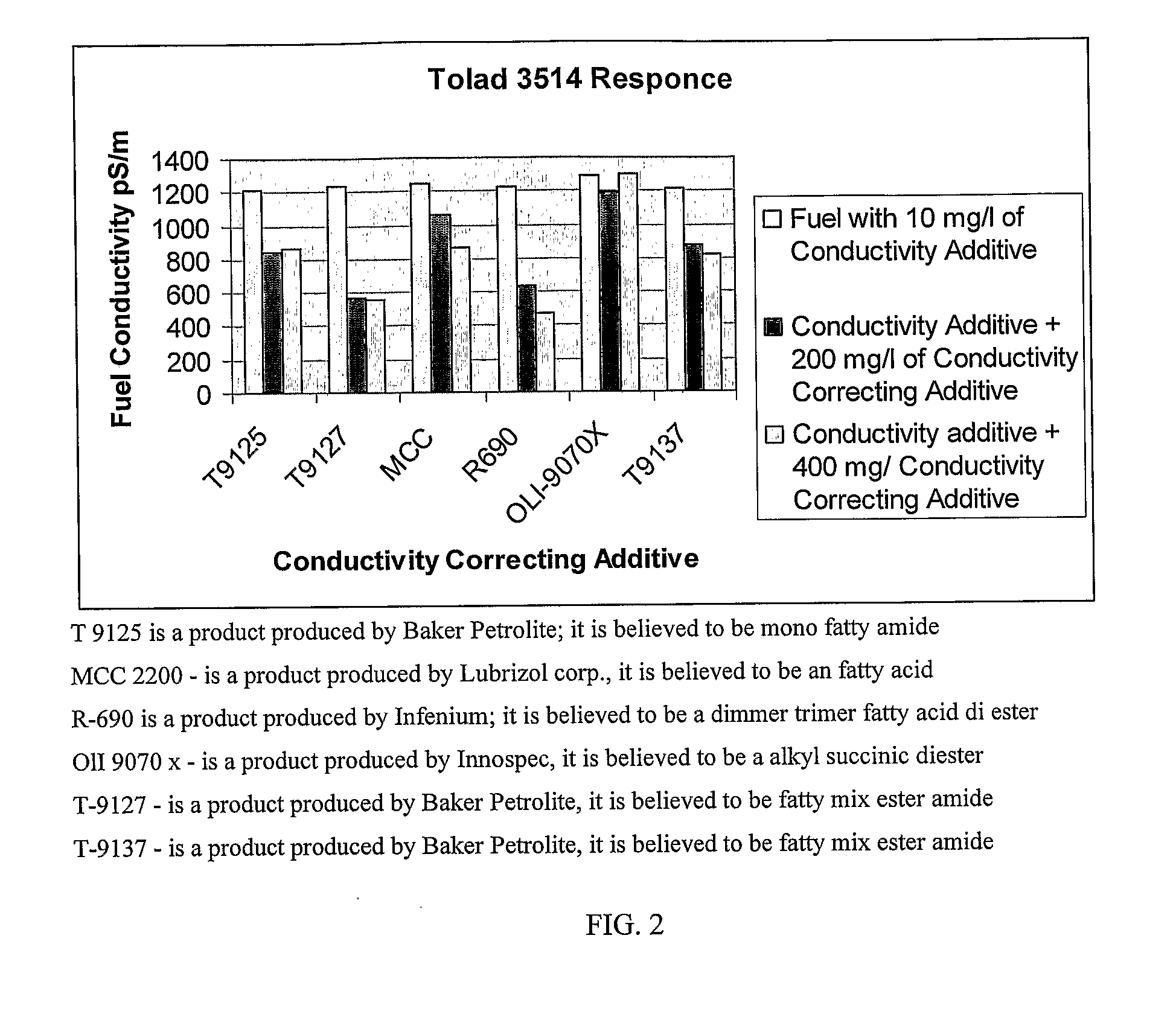Additive compositions for correcting overtreatment of conductivity additives in petroleum fuels
a technology of conductivity additives and additive compositions, applied in the field of additive compositions, can solve the problems of static charging, and low sulfur content of fuels,
- Summary
- Abstract
- Description
- Claims
- Application Information
AI Technical Summary
Benefits of technology
Problems solved by technology
Method used
Image
Examples
example
[0084]Conductivity Test Method: Conductivity of the fuel is measured by using procedures outlined in ASTM D-2624 Standard Test Methods for Electrical Conductivity of Aviation and Distillate Fuels. The complete method is incorporated herein by reference.
Conductivity Correcting Additive Test Method:
[0085]General Additive Survey: The effect on conductivity upon combining other fuel additives with conductivity additives was evaluated. A series of additives available in the fuel industry were added to #2 ULS Diesel containing 1 mg / l of market available conductivity additives. The additives which exhibited the greatest conductivity control response were then reevaluated at higher doses of conductivity additive.
[0086]Conductivity Correcting Additive Screen: The base line conductivity of the fuel containing 10 mg / l of conductivity additive was measured. The additives selected from the General Additive Survey were then dosed into a high conductivity fuel (10 mg / l of conductivity additive) at...
PUM
 Login to View More
Login to View More Abstract
Description
Claims
Application Information
 Login to View More
Login to View More - R&D Engineer
- R&D Manager
- IP Professional
- Industry Leading Data Capabilities
- Powerful AI technology
- Patent DNA Extraction
Browse by: Latest US Patents, China's latest patents, Technical Efficacy Thesaurus, Application Domain, Technology Topic, Popular Technical Reports.
© 2024 PatSnap. All rights reserved.Legal|Privacy policy|Modern Slavery Act Transparency Statement|Sitemap|About US| Contact US: help@patsnap.com










